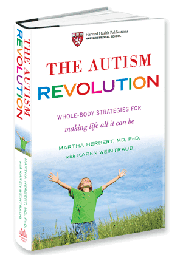Development of technologies for autism is explosive. Here are some of the purposes for which technologies are being designed:
- Assistive technology
- Communication
- Communication boards, typing, typing-to-speech
- Detection of communication intentions through electrophysical signal detection
- Learning and Teaching
- Measurement
- Physiological monitoring, e.g. of stress levels
- Movement analysis of stereotypies
- Assessment
- Diagnosis
- Therapy
- Biofeedback, neurofeedback
- Postural and balance training
- Data tracking for parents, teachers and clinicians
- GPS tracking for people who elope and roam


